
Can You Be Gay And Christian? A Comprehensive Exploration of LGBTQ+ Faith, Inclusivity, and Church Communities
1. Introduction – Can You Be Gay And Christian?
Can you be gay and Christian? This question cuts to the heart of a longstanding conversation about faith, identity, and the diverse ways people reconcile spiritual beliefs with their sexual orientation. For centuries, Christianity has shaped moral perspectives around sexuality, often yielding condemnation for gay and lesbian individuals. Simultaneously, many LGBTQ people have found profound comfort, purpose, and community within Christian traditions. Reconciling these two facets—sexual orientation and religious devotion—remains both a deeply personal and widely debated endeavor.
In the modern era, discussions around Is being gay a sin? What if I’m gay? Will God still love me? echo across church pews, social media, and theological institutions. Meanwhile, denominations worldwide wrestle with how to interpret Biblical passages dealing with same-sex relationships, resulting in a spectrum of beliefs from strict non-affirmation to full inclusion. For some believers, these interpretive battles shape daily life, guiding which churches they attend and how they perceive God’s acceptance.
This blog aims to chart a thorough exploration of how one might affirm both their LGBTQ identity and Christian faith. We’ll delve into Homosexuality and Christianity from historical vantage points—observing how early church doctrines labeled same-sex attraction as sinful, and how recent activism birthed “affirming theology.” We’ll address the relevant biblical arguments in What Does the Bible Say About Homosexuality? and weigh the interpretations that progressive vs. traditionalist communities use to either welcome or exclude LGBTQ believers.
But theology is only part of the puzzle. We’ll also examine the lived experiences of queer Christians: how some navigate family pushback, find Gay-Friendly Churches, or cultivate spirituality within LGBTQ+ churches. We’ll provide practical guidelines on How to Find a Church That Is Safe for LGBTQ People, noting denominational stances and local resources. Furthermore, we’ll discuss the church’s approach to gay parenting, trans identity, and broader issues—because, for many, their faith extends into all dimensions of life.
Throughout, we’ll answer concerns like Is It REALLY Ok to Be LGBTQ & Christian? Some hearts cling to scripture that has been historically interpreted to condemn homosexuality. Others argue that cultural context, exegesis, and the overarching Biblical ethic of love pave the way for full acceptance of LGBTQ believers. We’ll investigate these stances, offering a balanced perspective that respects theological nuance while championing the dignity of LGBTQ persons.
Lastly, we’ll consider the future of Christian-LGBTQ coexistence: from quiet transformations within conservative denominations to bold expansions of inclusive ministries. A global lens will show how acceptance varies significantly across continents, revealing progress in some regions and regressions in others.
In the end, we hope readers—whether devout Christians, spiritual seekers, or curious onlookers—grasp the complexities and possibilities inherent in this question. The existence of countless openly gay, lesbian, bisexual, transgender, or queer Christians underscores that reconciling faith and orientation is not only possible but already a lived reality for many. Let’s proceed with open hearts and minds as we journey through the nuances of Can You Be Gay And Christian?

2. Historical Tension: Being LGBTQ & Christian
Understanding the tension between Christian teachings and LGBTQ identities requires a historical lens. For centuries, the Christian Church exerted profound influence on Western societies’ moral codes, shaping laws around sexuality and relationships. Early Christian theologians often condemned homosexuality as an affront to divine design, cementing a stigma that carried over through the Middle Ages, Renaissance, Reformation, and beyond.
2.1. Early Church Perspectives
- Biblical Literalism: Certain Bible passages—e.g., from Leviticus or Romans—were interpreted to forbid same-sex acts outright. Church fathers like Augustine or Thomas Aquinas framed “sodomy” as deviant, merging religious condemnation with social shame.
- Political Enforcement: Medieval and early modern European states, influenced by church teachings, enacted harsh penalties (including death) for “sodomy.” This legal synergy between church and state terrorized those with same-sex desires.
2.2. Reformation and Enlightenment Shifts
- Reformation Diversity: Martin Luther’s challenge to Catholic authority triggered denominational splinters—some retained harsh views on “unnatural sin,” while others adopted marginally more moderate stances.
- Age of Reason: Enlightenment thinkers introduced scientific rationales for human behavior, slightly loosening the religious grip on sexuality. Still, homophobia endured in many Christian contexts, reaffirming that homosexuality was sinful and unnatural.
2.3. 19th and 20th Centuries: Medicalization and Moral Debates
- Psychiatric Influence: In the late 19th century, homosexuality got labeled as a mental disorder in Western medicine. Churches sometimes used these medical pathologies to reinforce condemnation or push “cures.”
- Gradual Societal Erosion: By the early 20th century, some theologians questioned the rigid condemnation. However, mainstream Christianity persisted in framing homosexuality as an “affliction” to be managed or repressed.
2.4. Mid-Late 20th Century: Gay Rights Meets Christian Orthodoxy
- Civil Rights Era: As the 1960s progressed, broader civil rights movements influenced discussions on personal liberty and identity, leading some liberal congregations to see parallels between racial justice and gay acceptance.
- Stonewall Riots (1969): The subsequent wave of Gay Liberation pressed churches to reevaluate their stances. Some denominations (like the Metropolitan Community Church, founded 1968) openly ministered to LGBTQ folks. Others entrenched, declaring homosexuality incompatible with Christian faith.
2.5. Evolving Debates Entering the 21st Century
- Progressive Denominations: The United Church of Christ, Episcopal Church (USA), some Lutheran synods, and other liberal denominations gradually ordained LGBTQ clergy or performed same-sex marriages.
- Conservative Resistance: Conversely, Roman Catholic leadership, Southern Baptists, and many evangelicals reaffirmed condemnations, intensifying the theological rift. The “ex-gay” movement flourished, promoting “conversion therapy.”

2.6. Summary of Tensions
This historical tension boiled down to biblical interpretation, tradition, and cultural mores. For centuries, to “be gay and Christian” was either unthinkable or forced underground, leading countless LGBTQ Christians to hide or endure spiritual trauma. Over time, activism, scholarship, and changing social attitudes have chipped away at rigid condemnation, giving rise to the question Is it REALLY ok to be LGBTQ & Christian? as a legitimate, open debate.
Conclusion: The historical strain between the Church and homosexuality set a formidable stage. Yet as we’ll explore, theological evolution, fresh scriptural readings, and inclusive activism now broaden the possibilities for LGBTQ believers. From these roots, we move toward modern dialogues on “Can You Be Gay And Christian?”—and discover answers that blend faith, love, and acceptance.
Advertisement · Scroll to continue
Recommended
3. Biblical Passages: What Does the Bible Say About Homosexuality?
Central to the tension around “Is being Gay a Sin?” are biblical texts historically cited to condemn same-sex relationships. Understanding these passages—and how different Christians interpret them—is crucial for anyone asking “What Does the Bible Say About Homosexuality?” This section clarifies the most commonly referenced scriptures while highlighting interpretive differences.
3.1. Old Testament References
- Genesis 19 (Sodom and Gomorrah): Often cited as a story punishing homosexuality. However, many scholars argue the sin was primarily about attempted gang rape, inhospitality, and violence, not consensual same-sex love.
- Leviticus 18:22 and 20:13: “A man shall not lie with a man as with a woman; it is an abomination.” Traditional readings see this as an unequivocal condemnation. Affirming theologians note these Levitical laws also ban shellfish, mixing fabrics, and certain haircuts. They argue that modern believers don’t follow all ceremonial or purity laws, suggesting historical/cultural context matters.
3.2. New Testament Passages
- Romans 1:26–27: Often considered the strongest condemnation in the New Testament, describing “women exchanging natural relations” and men “committing shameless acts with men.” Traditional interpreters read this as labeling homosexuality sinful. Affirming theologians propose that Paul references exploitative or idolatrous sexual behavior, not loving same-sex unions.
- 1 Corinthians 6:9–10: Lists “men who have sex with men” among those who won’t inherit God’s kingdom. Debate surrounds the Greek terms malakoi and arsenokoitai, which may refer to pederasty or male prostitution rather than consenting adult relationships.
3.3. Interpretive Approaches
- Traditional (Non-Affirming): Maintains that scripture plainly forbids all same-sex acts. They see homosexuality as a violation of God’s design for male-female complementary marriage. Some encourage celibacy for believers with same-sex attractions.
- Affirming Theology: Argues context, language, and broader biblical principles of love and justice suggest these “clobber passages” condemn specific exploitative acts, not modern committed same-sex couples. They highlight that the Bible lacks references to sexual orientation as understood today, focusing on love-based hermeneutics that sees acceptance as Christ-like.
3.4. Broader Scriptural Themes
Rather than fixating on a handful of verses, many affirming Christians emphasize overarching biblical motifs—love, compassion, justice, and the worth of all humans. They question the fairness of upholding certain ancient purity laws while disregarding others. They also note Jesus never explicitly addressed same-sex attraction, focusing more on hypocrisy, exploitation, and love.
3.5. Contemporary Impact
These differing interpretations drive denominational splits—some remain strictly non-affirming, while others open to gay clergy and marriages. Individuals wrestling with “Can You Be Gay And Christian?” often study these passages in detail, deciding which interpretive lens they find most compelling or consistent with God’s nature.
Conclusion: The question “What Does the Bible Say About Homosexuality?” can’t be answered monolithically. Scripture references exist, but how they apply to consensual, loving same-sex relationships depends on hermeneutical choices. Both sides claim scriptural fidelity, yet produce starkly different conclusions. For LGBTQ Christians seeking spiritual peace, grappling with these passages is often a pivotal, if sometimes painful, journey.

4. Interpreting Scripture: Affirming vs. Non-Affirming Views
Homosexuality and Christianity often hinges less on what the Bible literally states and more on how believers interpret those statements. This section explores the spectrum of affirming and non-affirming theological perspectives, revealing the complexity behind “Is it REALLY ok to be LGBTQ & Christian?” debates.

4.1. Non-Affirming (Traditional) Theologies
- Literalist Interpretation: Passages like Leviticus 18:22, Romans 1, and 1 Corinthians 6 are deemed universally applicable. Non-affirming Christians believe these condemn any same-sex relations as sinful, an affront to divine creation.
- Complementarity Argument: They uphold that Genesis sets a “male-female” design. Marriage is for procreation, symbolizing Christ’s union with the Church. Same-sex unions, they argue, disrupt this symbolic order.
- Celibacy or Change: Some non-affirming churches encourage gay individuals to remain celibate or seek orientation change through prayer (so-called “conversion therapy”), though evidence widely discredits these therapies as ineffective and harmful.
4.2. Affirming (Inclusive) Theologies
- Contextual Reading: Affirming Christians see the “clobber passages” as bound to ancient cultural contexts—idolatry, rape, or exploitation—rather than loving, consensual same-sex relationships.
- Christocentric Focus: They emphasize Jesus’ messages of love and inclusion (e.g., “by their fruits you shall know them”), concluding that moral condemnation of LGBTQ believers contradicts the Gospel’s inclusive ethos.
- Holy Relationships: Affirming churches bless same-sex marriages, viewing them as equally reflective of covenant love. They interpret biblical “fruitfulness” not purely as reproduction but as spiritual and emotional fruit in relationships.
4.3. Middle Positions and “Third Way” Approaches
- “Love the Sinner, Hate the Sin”: Some moderate churches claim compassion for LGBTQ people but still label same-sex acts as sin. This stance has faced criticism for implicitly upholding stigma.
- Pastoral Accommodation: A few denominations remain internally divided, permitting local churches to decide. They might not officially sanction same-sex marriage but also don’t strictly forbid LGBTQ inclusion. This balancing act often causes tension among congregants.
4.4. Shifting Denominational Stances
- Splits and Schisms: The United Methodist Church, for instance, has faced protracted conflict over LGBTQ ordination and marriage, risking denominational split. Similar scenarios transpired in Anglican, Presbyterian, and Lutheran circles worldwide.
- Rapid Cultural Evolution: As public acceptance of same-sex relationships grows, younger Christians push for affirming theology. Church leadership sometimes lags behind, fueling generational divides.
4.5. Personal Discernment
For LGBTQ believers, reconciling faith and orientation might involve intense study, prayer, and counsel. They may exit non-affirming environments, finding refuge in fully inclusive congregations. Others remain within conservative churches, attempting to instigate internal reforms or quietly living as faithful, closeted congregants.
Conclusion: The rift between affirming and non-affirming interpretations shapes how Christians handle homosexuality. Affirming theology reframes biblical texts, seeing them as contextual rather than blanket condemnations, while traditional readings maintain a strict moral code. Understanding these theological nuances clarifies why denominational stances vary so widely, and how believers, especially LGBTQ ones, chart their own spiritual paths in the face of doctrinal conflict.
5. Is It REALLY Ok to Be LGBTQ & Christian? The Theological Debate
After reviewing Bible verses and interpretive frameworks, many still wonder: “Is it REALLY ok to be LGBTQ & Christian?” This question stirs deep theological and moral passions, often underpinned by centuries of dogma. Let’s articulate the central arguments for yes or no, highlighting that personal conviction and community acceptance can differ widely.
5.1. The Argument for Acceptance
- God’s Unconditional Love: Affirming Christians emphasize that God’s love extends to all creation, inclusive of diverse sexual orientations. They cite the teaching that “nothing can separate us from God’s love” (Romans 8:38–39).
- Jesus’ Ministry: Jesus associated with marginalized groups, championing compassion over legalism. Affirming believers see parallels with how he might treat LGBTQ individuals in modern contexts—embracing them wholeheartedly.
- Spiritual Fruits: If a same-sex relationship manifests love, patience, kindness, and devotion, it arguably bears “good fruit,” suggesting it aligns with God’s will more than the condemnation suggests.
- Cultural Context of Biblical Texts: Authors wrote in settings ignoring contemporary understandings of sexual orientation, describing exploitative acts (temple prostitution, pederasty). Interpreting them as blanket bans on loving gay relationships may be anachronistic.

5.2. Non-Affirming Rationale
- Scriptural Prohibitions: Traditionalists read certain verses as clearly proscribing same-sex intimacy. They view these as timeless moral truths, not restricted to ancient contexts.
- “Male-Female Creation”: They argue creation narratives set an unambiguous male-female design for marriage, from which any deviation is disordered.
- Historical Consensus: For centuries, most Christian authorities consistently condemned same-sex relations, implying theological continuity.
- Call to Holiness: Non-affirming believers emphasize resisting sinful desires, viewing homosexual orientation as a trial to overcome, often through celibacy.
5.3. Varied Experiences: From Harm to Healing
- Negative Impact: Many LGBTQ individuals forced into “reparative therapy” or shamed by non-affirming churches have experienced mental distress, sometimes leaving faith communities entirely.
- Positive Reconcilers: Those in affirming churches or who found middle ground testify to spiritual enrichment, feeling God’s presence endorsing their identity and relationships.
5.4. Pastoral Approaches
- Full Inclusion: Affirming congregations ordain LGBTQ pastors, celebrate same-sex weddings, and treat orientation neutrally.
- Partial Inclusion: Some allow gay members but forbid leadership or marriage ceremonies. Others profess “welcoming but not affirming,” which fosters confusion or second-class status.
- Outright Rejection: Certain churches excommunicate unrepentant LGBTQ members or push them toward “healing ministries.”
5.5. Practical Implications
“Is it REALLY ok to be LGBTQ & Christian?” touches real lives. Accepting “yes” fosters mental well-being, stable relationships, and spiritual flourishing. Emphasizing “no” can cause guilt, secrecy, or existential crises. A crucial dimension is how theological stances impact real families, relationships, and self-esteem.
Conclusion: The theological debate is far from settled in universal terms. Yet thousands of LGBTQ Christians confidently claim “yes,” citing scriptural reinterpretations, personal encounters with God’s love, and community acceptance. Conversely, non-affirming voices remain influential, championing traditional readings. For seekers, discerning truth often means prayerful reflection, seeking supportive communities, and listening to the Holy Spirit’s prompting about identity and faith. Ultimately, each person’s journey is intensely personal, shaped by scriptural convictions, spiritual intuition, and encounters of love or rejection within the church community.

Advertisement · Scroll to continue
Recommended
6. Is Being Gay a Sin? What If I’m Gay? Will God Still Love Me?
These intimate questions—“Is being gay a sin?” “What if I’m gay—will God still love me?”—lie at the heart of the spiritual struggles faced by countless LGBTQ Christians. This section addresses them with pastoral sensitivity, theological nuance, and real-life relevance.
6.1. Traditional “Sin” Framework
- Belief That Homosexuality = Moral Transgression: Many conservative Christian circles hold that any homosexual act violates biblical morality, thus constituting sin. They differentiate between homosexual “inclination” (temptation) and “practice” (the sin).
- Celibacy Doctrine: In some churches (e.g., Roman Catholic Church), being gay isn’t inherently sinful, but acting on same-sex desires is. Consequently, gay Catholics are expected to remain celibate, upholding chastity consistent with official teachings.
6.2. Affirming Contrapoints
- Orientation vs. Behavior: Affirming Christians argue it’s inconsistent to call a stable, loving union “sinful” when it fosters mutual care, akin to heterosexual marriage. They emphasize that God sees the heart, not the gender composition.
- Gospel of Grace: The idea that “all have sinned” but Christ’s grace abounds suggests condemnation of orientation is contrary to a loving, redeeming God. Affirming theology states: if a relationship displays the fruits of the Spirit, it should not be dismissed as sin.

6.3. Addressing Self-Doubt: “Will God Still Love Me?”
- Christian Doctrine of Love: Most Christians affirm that God’s love is unconditional. Hence, many interpret that if a gay person sincerely seeks God, God’s love embraces them, orientation notwithstanding.
- Internalized Homophobia: LGBT persons raised in conservative churches might internalize shame or believe they are unworthy. Therapists and affirming ministers emphasize God’s acceptance, providing space to heal from religious trauma.
6.4. Stories of Reconciliation
- Testimonies: Numerous gay Christians share personal transformations. For example, some recall times they felt unlovable until they discovered affirming spiritual communities or realized that condemnation originated from cultural biases, not divine truth.
- Ex-Gay Movements: Individuals once participating in ex-gay programs often left feeling harmed or untransformed. Some leaders of ex-gay ministries publicly apologized or renounced conversion therapy as ineffective and damaging.
6.5. Pastoral Guidance
- Honest Discernment: Pastoral care in affirming churches invites individuals to pray, examine scripture contextually, and talk with mentors. The conclusion frequently reveals that same-sex orientation is not a barrier to God’s grace.
- Role of Forgiveness: Everyone errs—straight or gay. Affirming pastors highlight that orientation alone doesn’t define moral standing; actions do (kindness vs. cruelty, honesty vs. deceit). Being gay, in itself, is morally neutral.
6.6. Reframing Sin
If we define sin as that which harms or separates us from God or neighbor, then a loving, consensual same-sex relationship doesn’t inherently fit that definition. Affirming thinkers see sin more in terms of injustice, greed, or hatred. Meanwhile, non-affirming camps hold steadfast, urging gay Christians to resist temptation.
Conclusion: For those wrestling with “Is Being Gay a Sin?” and “Will God Still Love Me?”, the landscape is complex. Affirming voices say a resounding “God loves you unconditionally,” citing theology that reinterprets scripture as supportive or neutral on orientation. Non-affirming voices interpret tradition and certain Bible passages as forbidding same-sex acts. Ultimately, many LGBTQ Christians find peace in communities that celebrate them wholly—orientation included—affirming that God’s love transcends any dogmatic condemnation.
7. Homosexuality and Christianity: Divergent Denominations and Beliefs
Though we’ve examined broad interpretive camps, it’s crucial to see how real denominations articulate Homosexuality and Christianity. Christian traditions range from liberal, fully accepting same-sex relationships, to staunchly conservative, viewing them as incompatible with discipleship. Let’s map these divergent stances.
7.1. Fully Affirming Denominations
- United Church of Christ (UCC): Renowned as one of the earliest to ordain openly gay ministers, the UCC actively supports marriage equality and LGBTQ inclusion in all aspects of church life.
- Episcopal Church (USA): Permits same-sex marriage rites and has openly LGBTQ bishops. Internal splits occurred, with some congregations leaving to form more conservative Anglican bodies.
- Evangelical Lutheran Church in America (ELCA): Allows LGBTQ clergy and same-sex unions, albeit with minor variations among local synods.
- Metropolitan Community Church (MCC): Founded explicitly as an LGBTQ-affirming denomination in 1968, MCC’s entire mission is centered on welcoming LGBTQ believers.
7.2. Non-Affirming Denominations
- Roman Catholic Church: Holds that homosexual acts are intrinsically disordered, though it acknowledges individuals’ orientation is not sinful by itself. Official teachings require celibacy for gay Catholics.
- Southern Baptist Convention: Declares same-sex intimacy sinful, endorsing a “biblical definition of marriage” as heterosexual. Some churches adopt “love the sinner, hate the sin” rhetoric, while others are more rigid.
- Evangelical Churches: Many nondenominational or conservative evangelical churches strongly uphold a traditional stance, discouraging or excluding openly gay members from leadership roles.
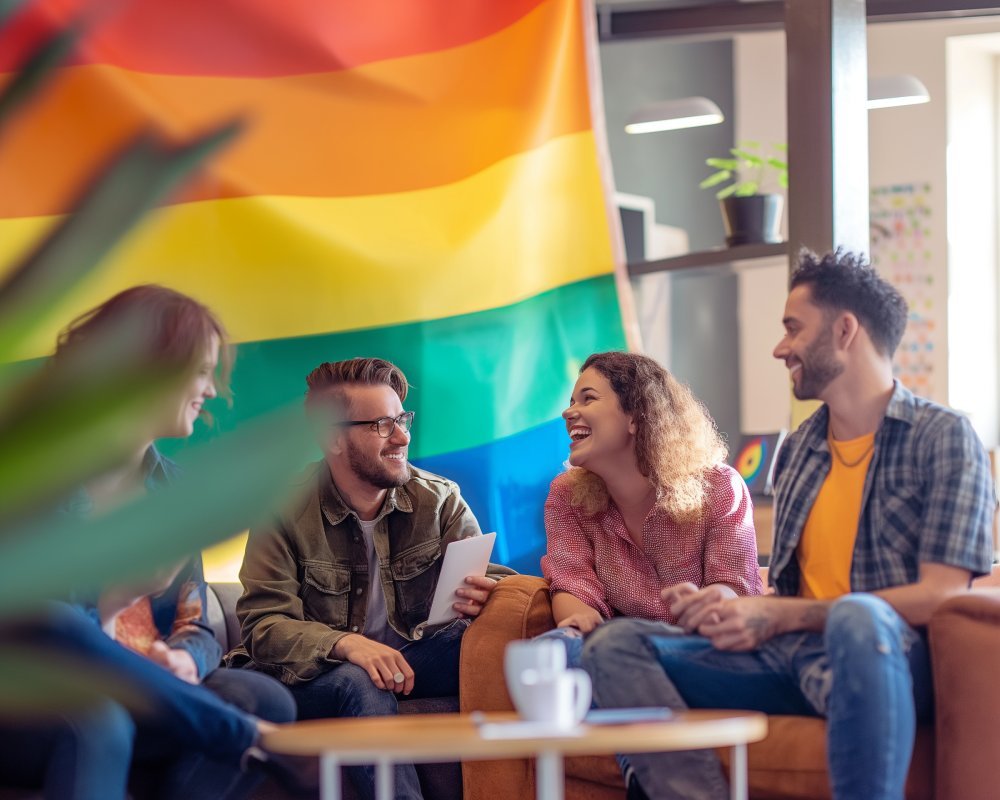
7.3. Split or Mixed Stances
- United Methodist Church: Global conferences remain deeply split. Progressive U.S. congregations support LGBTQ ordination and marriage, whereas international or southern U.S. branches oppose. Ongoing negotiations may lead to denominational schism.
- Presbyterian Church (USA) vs. Presbyterian Church in America (PCA): The PC(USA) is affirming, ordains gay clergy, and blesses same-sex marriage. PCA is staunchly traditional, rejecting LGBTQ clergy or ceremonies.
7.4. Orthodox and Eastern Churches
- Eastern Orthodox: Generally non-affirming, viewing same-sex relationships as outside the sacramental vision of marriage. Rarely do they waver from established dogma.
- Russian Orthodox: Strongly condemns homosexuality, influencing state policies in Russia that criminalize “gay propaganda.”
7.5. Pentecostal and Charismatic Branches
- Assemblies of God: Officially non-affirming, equating homosexual behavior with sin.
- Charismatic Inclusivity: A few smaller charismatic networks or independent churches have grown more affirming, though they remain in the minority.
7.6. Emerging Dialogue
Even in conservative denominations, a quiet minority advocates reevaluation, citing new scholarship or the lived faith of gay members. Grassroots activism can prompt reexamination of old positions. Conversely, some liberal segments fear “watering down Scripture.” This dynamic tension sees denominations shifting or fracturing over the role of LGBTQ members.
Conclusion: Christian denominations differ dramatically in how they approach homosexuality and same-sex families—some fully embracing, some tentatively welcoming with conditions, and others firmly rejecting. This variance underscores why LGBTQ believers often “church hop” to find a spiritual home matching their convictions and identity. In effect, Homosexuality and Christianity isn’t a single narrative but a constellation of stances shaped by doctrine, culture, and evolving moral perspectives.

8. How the Church Should Treat Those Who Identify as “Gay Christian”
Across denominations, the question arises: “How should the Church treat individuals who identify as ‘Gay Christian’?” Some interpret acceptance as moral compromise. Others see compassion, hospitality, and inclusion as the heart of Christ’s teaching. Let’s examine recommended postures that affirm dignity while acknowledging church diversity.
8.1. Embracing the “Gay Christian” Label
- Ownership of Faith and Orientation: LGBTQ believers who name themselves “Gay Christian” integrate their orientation with their devotion, rejecting the notion that these must be at odds. They cling to God’s love as an integral part of identity.
- Community Visibility: Publicly identifying as gay within the church paves the way for honest conversations about theology, discipleship, and inclusion. It can reduce stigma, encouraging others to speak up.
8.2. Welcoming vs. Affirming
- Welcoming: Some churches say “all are welcome,” letting LGBTQ folks attend but discouraging them from leadership or same-sex relationships. This partial acceptance can breed disappointment or a sense of second-class membership.
- Affirming: These congregations wholeheartedly embrace “gay Christians,” seeing no conflict between orientation and the call to follow Christ. LGBTQ members serve in all ministries, including pastoral roles, and same-sex unions are celebrated.

8.3. Pastoral Care: Sensitive and Non-Hostile
- Listening and Empathy: Church leaders should listen to LGBTQ testimonies, acknowledging past traumas from prior rejections or conversion therapy attempts.
- Safe Confession Spaces: Instead of pressuring them to repent of orientation, pastors can guide them in spiritual growth—like anyone else—addressing moral issues that actually revolve around virtues and relationships, not orientation itself.
8.4. Avoiding Harmful Approaches
- Conversion Therapy: Deemed unethical and harmful by leading psychological bodies. Churches endorsing such efforts risk causing psychological damage.
- Shaming and Excommunication: Threats of discipline or labeling someone as living in sin alienates them from community. Countless individuals have abandoned faith altogether under such hostility.
8.5. Constructive Engagement
- Dialogue Groups: Some churches form committees or small groups where members openly discuss sexual orientation, biblical interpretations, and personal journeys.
- Education: Inviting LGBTQ theologians, hosting seminars on inclusive theology, or referencing scholarly resources fosters informed, compassionate congregations.
8.6. Leadership Opportunities
- Open Positions: Affirming churches let LGBTQ Christians preach, lead worship, teach Sunday school, or oversee youth ministries. This representation challenges stereotypes and signals full acceptance.
- Guidance and Mentorship: Gay Christians can mentor younger LGBTQ believers, offering hope that they needn’t abandon faith due to orientation.
Conclusion: The question “How the Church Should Treat Those Who Identify as ‘Gay Christian’?” boils down to living out the gospel’s call to love one another. Affirming ministries champion unconditional belonging, while non-affirming circles sometimes impose boundaries. Nonetheless, many mainstream churches shift toward genuine inclusion, recognizing that condemnation, coercion, or half-hearted tolerance conflict with the biblical ethic of grace. This pivot—if sustained—could transform a historically fraught relationship into one of healing and shared spiritual enrichment.
9. Personal Journeys and Testimonies: Living as an LGBTQ Christian
Sometimes the best way to answer, “Can you be gay and Christian?” is through lived experiences. Personal testimonies from LGBTQ believers show how theology intersects with everyday faith, forging resilience, heartbreak, renewal, and ultimately deeper convictions.
9.1. Coming-Out Narratives
- Mike’s Story: Raised in a strict Baptist home, Mike felt torn between devotion to God and same-sex attractions. After years in “ex-gay” ministries that left him depressed, he discovered an affirming congregation. He recounts finally feeling embraced, describing it as a “homecoming” to God’s authentic love.
- Sophie’s Journey: A lesbian youth who struggled with self-harm, believing she was unlovable by God. Meeting an openly gay deacon at a local Episcopal church challenged her assumptions. This role model proved that Christianity could celebrate who she was, saving her from despair.
9.2. Reconciling Faith and Orientation
- Cognitive Dissonance: Many testimonies detail the mental conflict of hearing “homosexuality is abomination” from childhood while experiencing an unchosen orientation. The resolution often involves reinterpreting scripture or finding a church that sees no contradiction.
- Family Tensions: Some experiences involve being disowned by parents who hold conservative views. Others recount surprisingly supportive families, though extended relatives or church friends might still ostracize them.
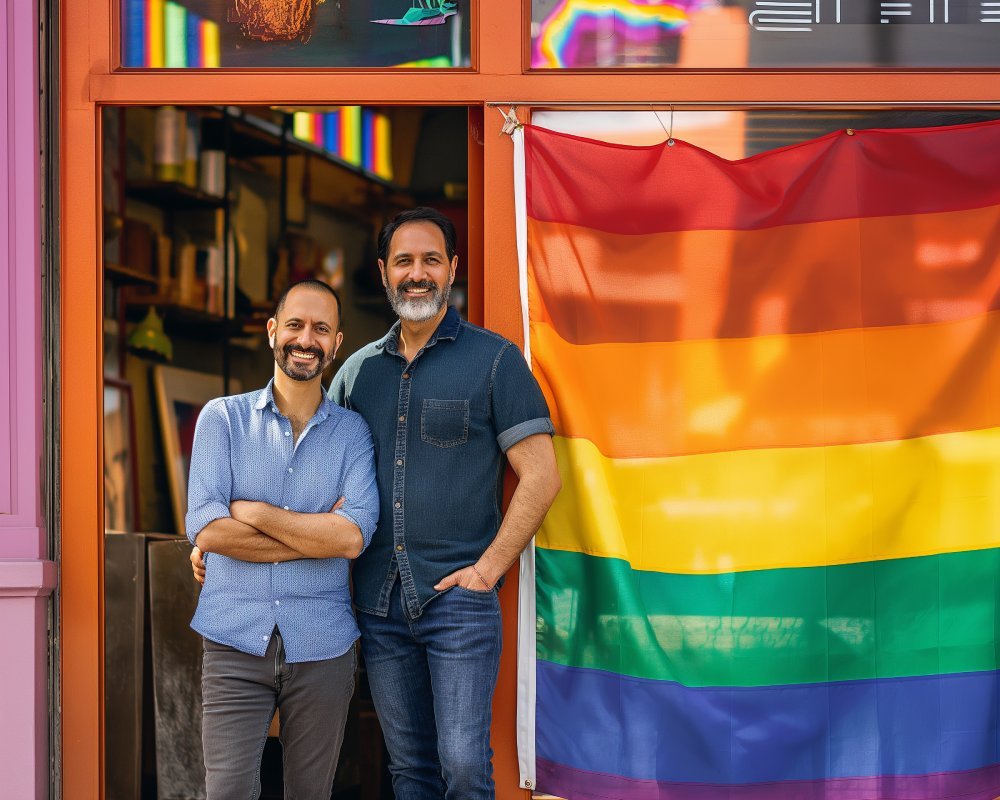
9.3. Finding Affirming Communities
- Local Affirming Churches: People often describe stepping into a “gay-friendly church” or “LGBTQ+ church” for the first time—an emotional moment of belonging without fear.
- Online Forums: For those in hostile areas, websites or social media groups become spiritual lifelines, offering prayer circles, Bible study, and mutual encouragement from across the globe.
9.4. Leadership and Service
- Ordained LGBTQ Ministers: Pastors or priests who come out publicly often endure intense scrutiny or censure. Yet many find congregations that welcome them as spiritual shepherds, bridging a gap between tradition and inclusive progress.
- Lay Leadership: Others serve as Sunday school teachers, worship leaders, or small-group facilitators. Their orientation, once hidden, now becomes a testimony to God’s diverse creation and the power of acceptance.
9.5. Grace and Growth
Recurring themes include discovering grace that surpasses condemnation, or forging a profound sense of identity integration. Many testimony-givers mention that acknowledging both their sexuality and spirituality ironically deepened their relationship with God, stepping away from guilt-driven faith into one shaped by joy.
9.6. Encouragement for Seekers
These real stories, be they from ex-evangelicals or cradle Catholics, highlight that one can indeed flourish as a queer Christian. Each tale underscores that though the path may be rocky—replete with lost friendships, internal struggles, or church rejections—authentic faith and orientation can coexist, often catalyzing spiritual depth and compassion.
Conclusion: Personal testimonies breathe life into theological debates, revealing how intangible ideas about sexuality and scriptural interpretation affect the hearts and hopes of real believers. For many, living openly as an LGBTQ Christian is a testament to resilience and divine love. Their stories remind us that faith is not static dogma but a dynamic, relational journey that can hold both identity and spirituality in harmony.

10. Gay-Friendly Churches and LGBTQ+ Congregations: Finding Your Spiritual Home
For LGBTQ Christians, stepping into a place of worship can be fraught with questions: Will I be judged? Can I participate fully? Or will I be quietly tolerated but never truly embraced? Thankfully, a growing number of gay-friendly churches and LGBTQ+ congregations offer affirmative environments. Let’s explore how these communities serve as spiritual homes for queer believers.
10.1. Defining Gay-Friendly vs. LGBTQ+ Congregations
- Gay-Friendly Churches: Often mainstream denominations that welcome LGBTQ individuals, allowing membership without condemnation. They might not be exclusively LGBTQ-oriented but maintain an affirming stance on inclusion, equality, and same-sex relationships.
- LGBTQ+ Congregations: Some faith communities explicitly form around serving LGBTQ believers, such as the Metropolitan Community Church (MCC). Here, nearly everyone is LGBTQ or a strong ally, shaping liturgies, ministries, and leadership structures to champion queer identity.
10.2. Hallmarks of an Affirming Church
- Official Statements: Many denominations or local churches publish “welcoming and affirming” statements, clarifying that LGBTQ people can serve in leadership, marry there, and engage in full sacramental life.
- Inclusive Language: Sermons, prayers, and worship songs use language that acknowledges different family structures. Church bulletins or websites mention Pride events, and visuals might feature rainbow flags or same-sex couples.
- Leadership Representation: LGBTQ pastors, elders, or deacons demonstrate genuine inclusion, not just token gestures.
- Safe Spiritual Care: Pastoral counseling avoids “fixing” orientation, focusing instead on discipleship, well-being, and personal growth.

10.3. Examples of Affirming Denominations
- United Church of Christ (UCC): Known for pioneering same-sex blessings and urging local congregations to adopt “Open and Affirming” statuses.
- Metropolitan Community Church (MCC): Entirely dedicated to LGBTQ worship, founded in 1968.
- Episcopal Church (USA): Many parishes openly welcome gay couples, some performing same-sex blessings and marriages.
10.4. Beyond the Christian Fold
- Queer Synagogues: For LGBTQ Jews, some Reform and Reconstructionist synagogues fully embrace them, hosting same-sex weddings or employing openly LGBTQ rabbis.
- Inclusive Mosques: LGBTQ-friendly Muslim spaces, though rare, do exist in larger metros, advocating progressive Quranic interpretations around sexuality.
10.5. Benefits of Belonging
- Spiritual Nourishment: Worshipping without fear of condemnation or double-talk fosters deeper spiritual engagement.
- Supportive Community: These churches build social bonds—LGBTQ potlucks, couples’ retreats, or youth groups—forging friendships, mentorship, and solidarity.
- Activism and Outreach: Many affirming congregations campaign for social justice, bridging faith with LGBTQ civil rights. They host events around mental health or HIV awareness, reflecting a holistic approach to ministry.
10.6. Limitations and Ongoing Work
While “gay-friendly” suggests acceptance, some churches remain in process, welcoming members but hesitating on officiating same-sex weddings or calling openly LGBTQ leaders. Others might inadvertently perpetuate subtle biases. Nonetheless, the rise of inclusive congregations marks a revolutionary shift from a time when LGBTQ individuals were almost universally shunned.
Conclusion: Gay-friendly churches or fully LGBTQ-led congregations offer safe havens for believers seeking to unite their faith and orientation. By weaving inclusive theology, leadership, and community activities, they provide spiritual nourishment without forcing self-censorship. For those who once felt exiled, these churches exemplify a modern reawakening of Christ’s message—hospitality, unity, and unconditional love.
11. “Gay Churches Near You”: Searching for Affirming Communities
When LGBTQ Christians move to a new city or wish to leave a non-affirming congregation, they often consult directories or search phrases like “Gay Churches Near Me” to find spiritual homes that celebrate their full identity. Let’s walk through practical steps for identifying gay-friendly worship spaces.
11.1. Online Directories and Resources
- GayChurch.org: A popular database that lists thousands of LGBTQ-affirming churches worldwide. Users can filter by location and denomination.
- ChurchClarity.org: Rates churches on how openly they disclose their LGBTQ+ policies. Transparency scores indicate whether same-sex marriage, leadership opportunities, or volunteer roles are allowed.
11.2. Denominational Websites
- UCC “Open and Affirming”: The United Church of Christ’s site includes a tool to locate “O&A” congregations that explicitly welcome LGBTQ people.
- ReconcilingWorks: For Lutheran (ELCA) communities, ReconcilingWorks maintains a directory of “Reconciling in Christ” churches.
- MCC Finder: Metropolitan Community Churches have an online map to locate one of their global congregations.
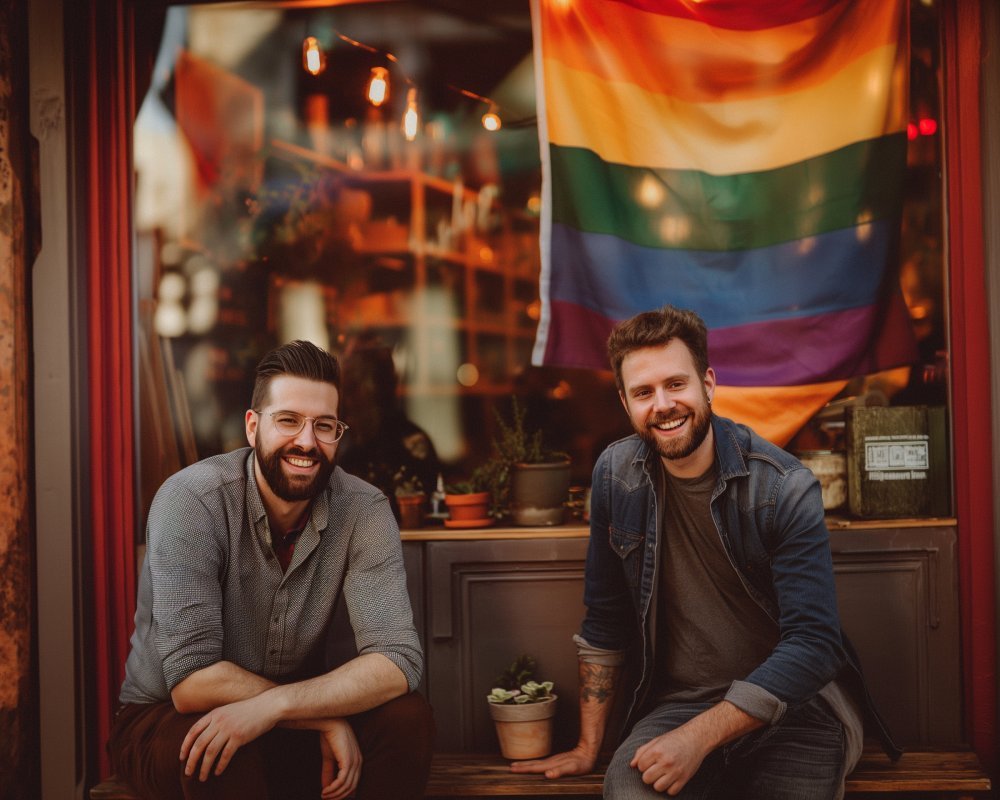
11.3. Local LGBTQ Community Centers
- Resource Lists: Many city-based LGBTQ centers provide brochures or online portals with recommended churches, temples, or interfaith gatherings.
- Word of Mouth: Asking staff or volunteers can yield personal endorsements of local parishes that integrate LGBTQ folks into leadership.
11.4. Evaluating a Church Visit
- Check Their Website: Affirming churches often display inclusive language or mention “All are welcome” disclaimers with explicit mention of sexual orientation/gender identity. If it’s vague, it might be a “welcoming but not affirming” stance.
- Observe Worship: Are same-sex couples openly participating? Do announcements reference Pride? Is there any mention of conversion therapy? If the environment feels ambiguous, speak with clergy or laity about specific beliefs.
- Community Vibe: The pews or fellowship hall reveal how actively LGBTQ people are engaged. If openly LGBTQ folks volunteer or greet visitors, it’s a sign of genuine acceptance, not just a token statement.
11.5. Discerning Red Flags
- Ambiguous Language: Some churches claim “We love everyone” but never confirm if they view same-sex marriage as valid or allow LGBTQ in leadership.
- Doctrinal Statements: If the statement of faith explicitly condemns homosexuality, or references “Bible-based sexuality only between a man and a woman,” it’s not affirming.
- No LGBTQ Representation: Large, diverse congregations with no visible gay members may suggest an unwelcome environment.
11.6. Building Relationships
Once you find a potential community, approach leadership for a conversation. Ask about same-sex weddings, how they handle children with gay parents, or if any openly LGBTQ individuals serve as elders. Positive, straightforward responses affirm a truly inclusive space. Over time, forging relationships with fellow congregants cements a sense of belonging.
Conclusion: Searching for “gay churches near me” can be both exciting and nerve-wracking. Thankfully, online resources, denominational directories, and local LGBTQ centers help streamline the hunt. By combining digital research with in-person visits, believers discern congregations that align with their orientation and spiritual convictions—thereby securing a supportive environment that nurtures faith without demanding they compartmentalize who they are.

12. How to Find a Church That Is Safe for LGBTQ People
Attending church should nurture spiritual growth, not stoke anxiety or self-doubt. But how can you confirm a faith community is truly “safe” for LGBTQ individuals, beyond shallow assurances? Let’s explore practical tips for identifying and vetting welcoming congregations.
12.1. Researching Online Presence
- Inclusion Statements: Does the church website or social media explicitly mention LGBTQ inclusion? Or do they merely say, “We welcome everyone”—with no mention of orientation/gender identity?
- Statements on Marriage: Affirming churches often highlight that they perform same-sex weddings, while non-affirming ones might disclaim “Biblical marriage is one man, one woman.”
- Sermon Archives: Watching recorded sermons can reveal if pastors treat LGBTQ topics with empathy or condemnation.
12.2. Communication with Leadership
- Email or Call: Politely ask about the church’s position on LGBTQ members, same-sex marriages, or leadership. Leaders who affirm will typically answer directly, while vague or evasive replies may signal partial acceptance or quiet disapproval.
- Ask about Roles: Clarify whether LGBTQ folks can serve in choir, children’s ministry, or as elders/deacons. If they deflect, suspect partial inclusion at best.

12.3. Visiting and Observing
- Atmosphere During Service: Evaluate sermon tone, worship music, and any mention of “sinful lifestyles.” Affirming pastors might reference diverse families or celebrating Pride. A negative tone or silence might not be conclusive but can raise flags.
- Congregational Demographics: A visible presence of openly LGBTQ people—leading worship, reading scripture—suggests genuine acceptance. If you see couples holding hands without awkwardness, that’s an encouraging sign.
12.4. Engaging Congregants
- Chatting at Fellowship: Introduce yourself, mention your orientation or “my spouse/partner is the same sex.” Gauge responses—do they shift uncomfortably or welcome you warmly?
- Small Groups: If there’s an LGBTQ fellowship group or inclusive Bible study, that’s strong evidence. If people talk about a friend’s gay wedding or mention Pride events, it signals an affirming environment.
12.5. Statements from Higher Authorities
- Denominational Policy: Some denominations have official inclusive stances, but local churches may differ. Cross-reference denominational guidelines with local church websites.
- Gay Affirming Directories: Using databases like GayChurch.org or ChurchClarity.org can help, though they’re not exhaustive. Cross-check is wise.
12.6. Balancing Caution and Open-Mindedness
Even in affirming churches, occasional prejudiced individuals may linger. Evaluate how leadership handles such conflicts. An environment that swiftly addresses bigotry fosters a safer space. Ultimately, trust your gut—if sermons or members’ attitudes cause tension, it might not be your spiritual home.
Conclusion: Ensuring a church is safe for LGBTQ people involves more than a cursory glance. By researching thoroughly, communicating with leaders, and observing on-the-ground dynamics, you can discern whether a congregation truly embodies inclusive values. This intentional approach prevents heartbreak, allowing you to invest time and faith in a community that respects your identity and fosters genuine spiritual growth.
13. Challenges and Hopes for LGBTQ Parenting in Christian Contexts
Within the broader question of “Can You Be Gay And Christian?”, a central concern is how the church and community respond to LGBTQ individuals raising children. This section probes the unique challenges and glimmers of hope for gay parenting in Christian contexts.
13.1. Difficulties Faced by LGBTQ Christian Parents
- Church Membership Hurdles: Non-affirming congregations may refuse full membership or leadership to LGBTQ parents, suggesting they’re violating “biblical family norms.” This can isolate them and their children from a faith community.
- Baptism/Child Dedication: Some pastors decline to baptize or dedicate children of same-sex couples, believing the parents’ relationship is sinful. This exclusion signals that the church rejects the entire family unit.
- Youth Group Pressures: As kids of LGBTQ parents grow, church youth programs might introduce homophobic teachings or fail to include examples of gay families in lessons, fostering confusion or shame.
13.2. Strategies for Inclusion
- Inclusive Child Ministries: Affirming churches ensure children of gay parents are integrated seamlessly. Sunday school materials depict diverse families, normalizing them.
- Pastoral Sensitivity: Clergy can counsel gay parents on typical parenting challenges—just like with straight families—recognizing orientation as one facet of their identity, not a moral stumbling block.
- Intergenerational Support: Some elderly members might initially resist, but communal events bridging older and younger congregants can spark empathy, showing that “these gay parents are just loving parents.”
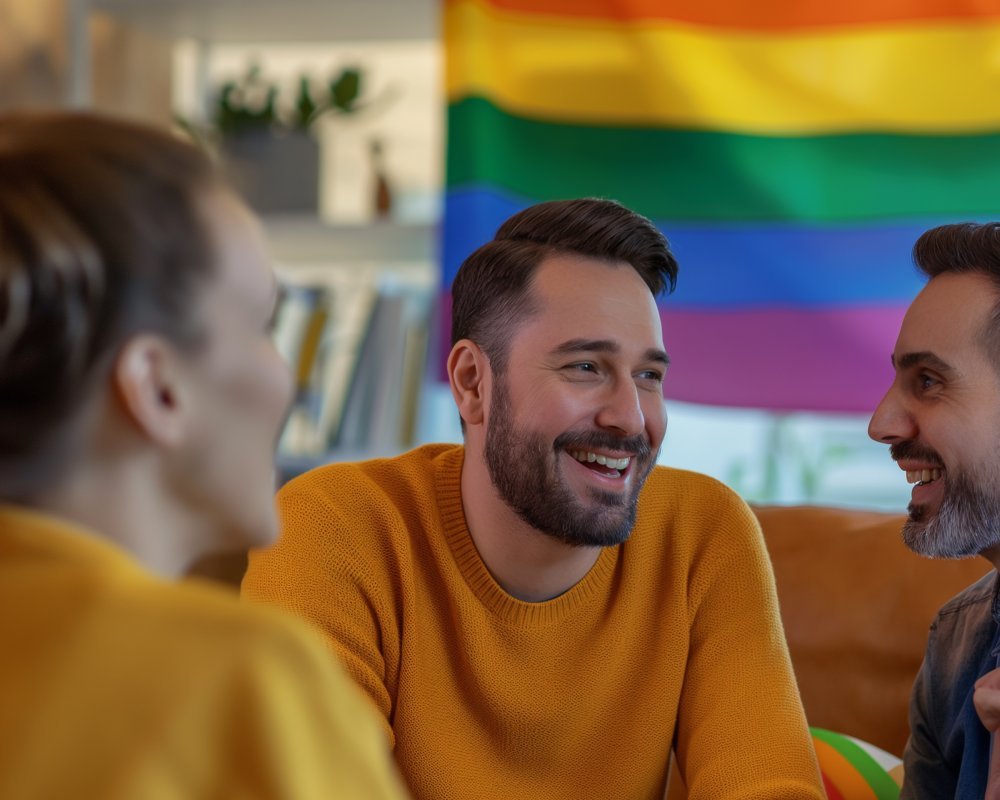
13.3. Allies Within the Church
Grandparents or other heterosexual parents in the congregation who openly champion LGBTQ families can help create a welcoming environment. Allies might volunteer in children’s ministries, ensuring no child experiences bullying or erasure because of their family structure.
13.4. The Impact on Children
- Confidence and Identity: If kids see their parents respected by fellow believers, they’re less likely to internalize shame about their family. Conversely, ostracism damages their sense of belonging.
- Spiritual Growth: A supportive environment fosters children’s faith development. They learn that God’s love extends to all families, reinforcing compassionate theology from a young age.
13.5. Hopes for the Future
- More Affirming Denominations: As younger Christians champion inclusion, denominations may revise stances, adopting open policies around same-sex parenting.
- Family-Focused Ministries: Some progressive churches integrate “Rainbow Families” gatherings or parenting classes, acknowledging the specific experiences of LGBTQ couples.
- Cultural Shifts: Ongoing visibility of same-sex parents in media, plus legal recognition of marriage and adoption, normalizes these families so that eventually, church controversies subside.
13.6. Personal Reflections
Many gay Christian parents describe a fusion of joy and relief when they find a congregation that embraces them and their children wholeheartedly. Observing their family recognized in worship services, potluck invitations, or christenings fosters hope that acceptance can become commonplace, not the exception.
Conclusion: LGBTQ parenting in Christian contexts remains a delicate terrain. Non-affirming doctrines can marginalize both parents and children, yet affirming communities illustrate how faith and family can unite seamlessly. As more churches evolve to celebrate these families, the future promises a generation of Christian children who see diversity as integral to God’s grand design—ensuring that love, rather than condemnation, prevails.

14. The Role of Allies and Advocacy Within the Church
LGBTQ Christians, while central to the movement for inclusion, don’t stand alone. Allies—straight congregants, church leaders, broader Christian activists—boost their voices significantly. This section highlights the role of allies in forging church cultures where being gay and Christian is fully accepted.
14.1. Defining Allies
Allies are non-LGBTQ individuals who champion the rights and well-being of LGBTQ folks. In church contexts, allies might be pastors, elders, Sunday school teachers, or lay members who proactively support gay congregants, resist homophobic rhetoric, and advocate policy shifts that validate same-sex relationships.
14.2. Forms of Allyship in Churches
- Public Statements: Pastors who openly declare “Our church affirms LGBTQ congregants” signal readiness to confront opposition.
- Supporting Inclusive Policies: Allies vote for or sponsor bylaw changes that allow same-sex weddings, pastoral positions for LGBTQ clergy, or thorough anti-discrimination guidelines.
- Education and Awareness: They arrange workshops on understanding the Bible’s cultural context, ensuring no single “clobber passage” interpretation stands unchallenged. Allies also bring in speakers from affirming theological backgrounds.
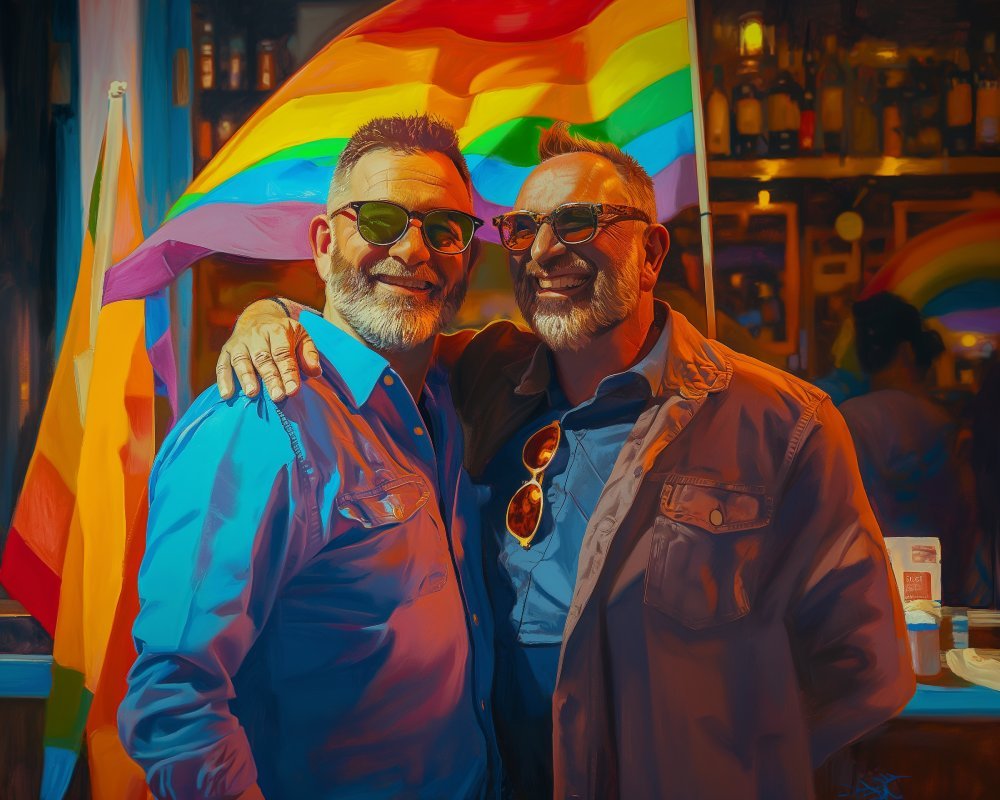
14.3. Impact on Church Dynamics
- Community Validation: When respected lay leaders or longtime members publicly back LGBTQ peers, fence-sitters often follow. Hearing that Sister Smith or Deacon Jones supports gay inclusion can shift hearts.
- De-escalating Conflict: Allies mediate tensions by bridging dialogues between conservative and progressive congregants, seeking respectful discourse, not alienation.
14.4. Risks Allies Face
- Backlash: Allies in conservative congregations might be ostracized, lose volunteer roles, or face leadership pushback. They can be labeled as heretical or enabling sin.
- Emotional Toll: Challenging one’s own community can strain longtime friendships. Allies need fortitude, empathy, and steady support from other affirming folks.
14.5. Moving From Passive Support to Active Advocacy
Some well-intentioned Christians might privately approve of gay inclusion but stay silent. Allies become truly influential when they speak up in church meetings, volunteer for LGBTQ ministries, or attend Pride events in solidarity. Such visible action fosters real change in norms.
14.6. Building Broad Coalitions
Ally networks often collaborate with LGBTQ Christian groups, mental health professionals, or denominational committees. This synergy fosters targeted campaigns—for instance, an ally might co-author an educational series with an LGBTQ deacon, combining theological expertise and personal testimony.
Conclusion: Allies serve as essential catalysts within Christian spaces, amplifying gay Christians’ calls for dignity. Their moral and relational capital can break stalemates, unlocking acceptance. Ultimately, the goal is a church environment in which LGBTQ members aren’t exceptions, but integral participants, shaped by shared devotion to Christ’s love. Allies’ willingness to stand up boldly—despite potential costs—helps propel religious communities toward comprehensive inclusion.
15. Reconciliation & Education: Steps Toward Inclusive Christian Communities
The tension between Christianity and LGBTQ identities calls for bridge-building. Reconciliation and education are pivotal in guiding non-affirming churches toward acceptance and healing wounded LGBTQ believers. By prioritizing conversation, empathy, and learning, communities can transcend entrenched biases.
15.1. Reconciliation Ministries vs. “Ex-Gay” Ministries
- Healthy Reconciliation: Seeks to mend relationships between LGBTQ individuals and their faith communities, not by trying to change orientation, but by erasing shame and fostering mutual respect.
- Ex-Gay Approaches: Historically promoted by some churches, focus on “converting” one’s orientation. Such programs often cause psychological harm. Many ex-gay leaders have recanted, validating that orientation is not merely “fixable.”
15.2. Educational Initiatives
- Bible Study Series: Affirming theologians can lead multi-week classes dissecting “clobber passages,” exploring cultural/historical contexts. Encouraging Q&A fosters in-depth understanding.
- Testimony Panels: Inviting gay Christians to share personal stories of coming out, reconciling with faith, or facing hostility can humanize the issue for skeptical congregants.
- Workshops on Pastoral Care: Training church leadership to support LGBTQ youths, couples, or families effectively ensures consistent compassion—no paternalistic or condescending attitudes.

15.3. Conflict Resolution in Congregations
- Facilitated Discussions: Churches might hire mediators or rely on denominational resources to handle disputes over LGBTQ inclusion. The aim is to keep love at the forefront, even when doctrinal divides remain.
- Gradual Policy Changes: Some communities progress step-by-step—first adopting inclusive membership, then allowing leadership roles, eventually performing same-sex marriages once trust grows.
15.4. Role of Christian Colleges and Seminaries
- Theological Shifts: Institutions like some progressive seminaries integrate queer theology into curricula, training future pastors in inclusive interpretations. This pipeline fosters more affirming churches.
- Campus LGBTQ Groups: Christian universities that once banned gay students are relaxing policies, offering support clubs. This fosters a new generation of leaders who see no contradiction between faith and orientation.
15.5. Healing for LGBTQ Members
- Pastoral Counseling: Affirming churches provide specialized counseling to reconcile spiritual traumas from prior condemnation. This therapeutic approach might include group therapy or one-on-one sessions.
- Rituals of Reconciliation: Some communities hold liturgical events acknowledging harm done, offering communal apologies, and blessing LGBTQ members as integral to the Body of Christ.
15.6. Measuring Progress
While some congregations remain hardened, many see shifts—families who once opposed gay rights might celebrate a relative’s same-sex wedding within the same church. Over decades, incremental steps—like acknowledging gay youth in Sunday school or letting a lesbian couple join the worship band—accumulate. The end result is an evolving, more inclusive Christian environment.
Conclusion: For communities grappling with LGBTQ acceptance, reconciliation and education function as vital catalysts. They replace ignorance with nuance, fear with empathy, and condemnation with genuine Christian fellowship. While friction may persist, these deliberate steps guide churches from conflict toward unity, enabling gay Christians to finally feel truly at home in the faith they cherish.
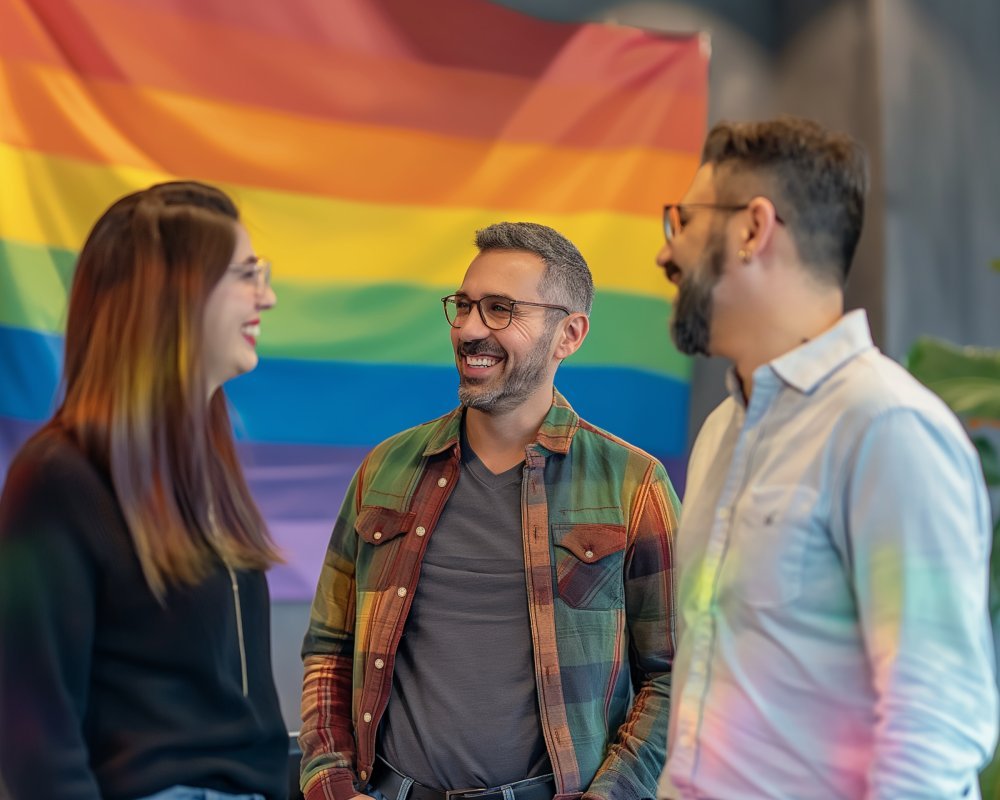
16. Intersectionality: Race, Gender, and Sexual Orientation in the Church
We’ve addressed intersectionality previously in terms of parenting, but it also profoundly shapes how LGBTQ Christians experience faith communities. Race, gender identity, and sexual orientation intersect within churches, revealing unique patterns of inclusion or exclusion.
16.1. Racial and Ethnic Dimensions
- Black Church Traditions: African American churches hold deep cultural significance. However, many remain conservative on homosexuality. Black LGBTQ believers often encounter homophobia within their community but also racism from predominantly white LGBTQ-affirming congregations.
- Hispanic/Latino Churches: Strong family ties and Catholic heritage can complicate coming out. Some Latino-led Protestant churches tilt conservative, though progressive pockets exist—like the Sanctuary movement or Liberation Theology contexts that champion social justice for all, including LGBTQ members.
16.2. Gender and Sexual Orientation
- Lesbian Women of Color: Face a triple intersection: racism, sexism, and homophobia. They may find themselves overlooked in white-led feminist or gay activism. Faith communities need concerted efforts to acknowledge these layered oppressions.
- Trans and Non-Binary Christians: Struggle not just with orientation acceptance but with traditional gendered language for God, worship practices, or dress codes. Non-binary believers often challenge “male pastor/female pastor’s wife” norms, pressing for inclusive liturgical language.

16.3. Cultural Nuances in Theology
Different ethnic Christian communities interpret scriptures through cultural filters. For instance, Eastern Orthodox traditions have strong ritual continuity, rarely reexamining stances on sexuality. Meanwhile, Pentecostal movements in the Global South might frame gay orientation as demonic oppression, intensifying stigma. Affirming theology must adapt to these contexts respectfully.
16.4. Activism from the Margins
- Womanist and Mujerista Theologies: Emerged from Black women’s or Latina women’s experiences, sometimes inclusive of lesbian identities. These theological schools highlight oppression’s multiple layers, urging holistic liberation.
- Grassroots Urban Ministries: In diverse metropolitan areas, LGBTQ Christians of color create community spaces that integrate both spiritual worship and social-justice activism addressing issues like immigration, police brutality, and access to healthcare.
16.5. Steps Toward Intersectional Solidarity
- Inclusive Leadership: Churches can ensure leadership teams reflect ethnic and gender diversity, including LGBTQ representation. This top-down approach fosters a broader sense of belonging.
- Contextualized Preaching: Pastors weaving relevant cultural concerns—like systemic racism or sexism—into messages about love and inclusion show sincerity in supporting intersectional identities.
- Community Partnerships: Collaborating with anti-racist or anti-sexist groups can highlight that homophobia, sexism, and racism share roots in prejudice, spurring holistic activism.
16.6. Future Vision
A truly inclusive Christian space acknowledges that orientation is only one dimension. Affirming theology, when merged with anti-racism, feminism, and trans acceptance, fosters communities where no one must fragment their identity. The church, in this vision, becomes an intersection of love that sees each believer wholly—Black, trans, lesbian, disabled, or any combination.
Conclusion: Intersectionality underscores that “gay Christian” is rarely a singular identity. By respecting how race, gender, class, and orientation intersect, churches can avoid token gestures and genuinely welcome diversity. This synergy enriches the entire Body of Christ, reflecting the multifaceted nature of humanity under one unifying faith.
17. Global Perspective: LGBTQ+ Christians Worldwide
While Western contexts—like the U.S. or parts of Europe—show incremental acceptance, the global picture is far more varied. LGBTQ Christians in certain regions battle entrenched homophobia or state-sponsored persecution. Understanding this global scope reveals how “Gay-friendly churches” might be unthinkable in some societies, and how activism adapts cross-culturally.
17.1. Africa
- Criminalization: Many African nations inherited anti-sodomy laws from colonial eras, leading to arrests or violence. For LGBTQ Christians, public worship or admission of orientation can be life-threatening.
- Underground Churches: Some African LGBTQ believers form secret fellowships for worship and mutual support. They rely on encrypted communication to avoid detection by authorities.
- South Africa: A bright spot with constitutional protections and same-sex marriage. Affirming congregations exist, though cultural stigma remains in certain provinces.
17.2. Asia
- Religious Diversity: Christianity is a minority faith across much of Asia, except in places like the Philippines or South Korea. LGBTQ Christians might merge minority status (as Christians) with minority orientation.
- Variations: Taiwan legalized same-sex marriage, forging a more tolerant environment for Christian LGBTQ folks. Meanwhile, in nations like Indonesia or Pakistan, being both Christian and gay can attract double marginalization—religiously and sexually.

17.3. Latin America
- Catholic Strongholds: Predominantly Catholic countries, yet many advanced LGBTQ rights (e.g., Argentina’s same-sex marriage since 2010). Affirming Catholic communities exist, though official Vatican doctrine remains conservative.
- Pentecostal Influence: Rapid Pentecostal growth in Brazil or Colombia sometimes fosters anti-gay rhetoric, but progressive pockets within mainline Protestant churches advocate for inclusivity.
17.4. Middle East
- Severe Penalties: In countries under strict Islamic law, homosexuality is criminal or punishable by death. Christian minorities in these nations can face persecution for faith alone; being LGBTQ adds another layer of risk.
- Refugees and Asylum Seekers: Some flee to Europe or North America, seeking safer spaces to live their faith and orientation openly.
17.5. Oceania
- Australia and New Zealand: Both have strong LGBTQ protections, including marriage equality. Mainline churches remain divided but generally more accepting than in many global regions. Islands in the Pacific vary—some hold conservative Christian worldviews that stigmatize homosexuality, while others preserve indigenous “third-gender” traditions.
17.6. International Support Networks
- Global Denominations: The Anglican Communion or Methodist Church host conflicting stances across continents. Some national branches ordain gay clergy; others severely oppose.
- LGBTQ Christian NGOs: Groups like the Global Interfaith Network for People of All Sexes and Genders help connect local activists, share resources, and push for inclusive faith frameworks worldwide.
Conclusion: The worldwide tapestry reveals both oppression and hope for LGBTQ Christians. Affirming spaces flourish in certain countries, yet in others, hostility reigns. Cultural, legal, and religious climates interplay to define whether “Can you be gay and Christian?” is publicly embraced or remains underground. Observing these global patterns underscores the universal yearning for spiritual belonging among LGBTQ believers, inspiring efforts to foster safe, affirming worship across every continent.

18. The Future of LGBTQ+ and Christian Coexistence
As we near the conclusion of this expansive blog, the final question arises: What does the future hold for LGBTQ individuals seeking spiritual wholeness within Christianity? While obstacles persist, signs of a more inclusive tomorrow abound.
18.1. Continuing Theological Evolutions
- Progressive Biblical Scholarship: Ongoing academic research unpacks ancient contexts for biblical passages, reinforcing that same-sex condemnation often hinged on exploitative acts, not loving relationships. This scholarship trickles into seminary curricula, influencing future pastors.
- Ecumenical Dialogues: Some denominations forge working groups to tackle sexuality controversies, bridging conservatives, moderates, and progressives. Such dialogues can shift denominational policy over time.
18.2. Youth-Driven Change
- Gen Z’s Attitudes: Younger Christians, raised with LGBTQ visibility, largely accept same-sex relationships. They’re less tolerant of churches that refuse basic equality. If denominations want to retain younger members, they may have to adapt.
- Schools and Universities: Religious colleges that historically discriminated might face student revolts demanding inclusive policies. The trajectory suggests student activism rewriting campus rules.
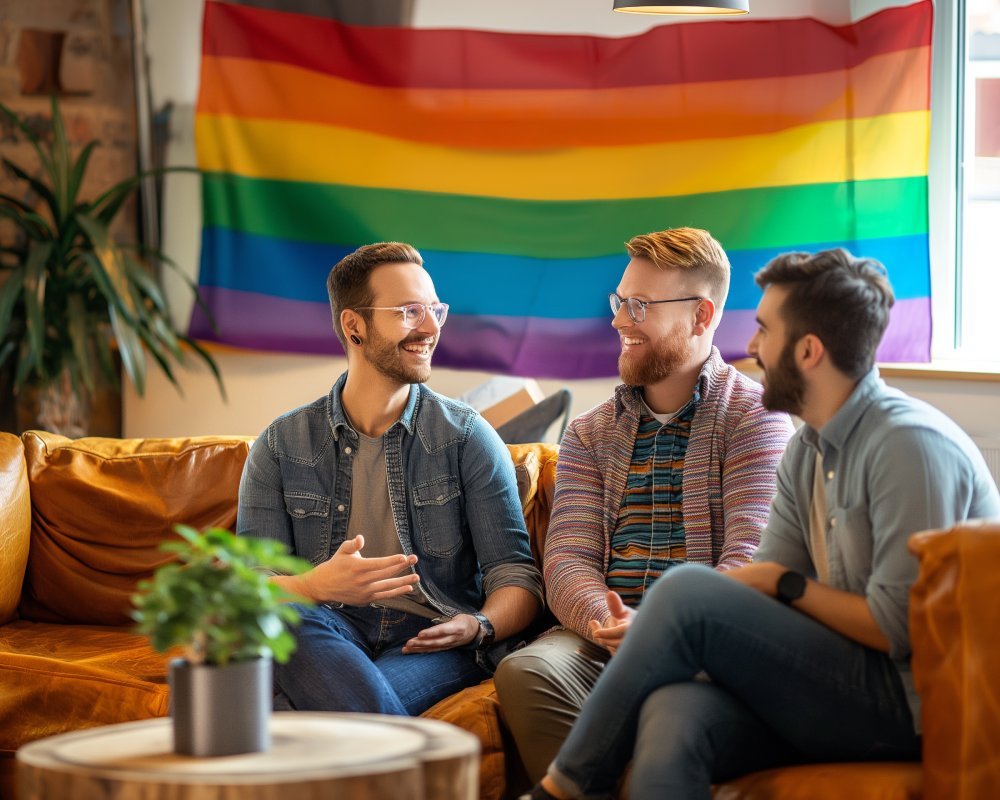
18.3. Technological Empowerment
- Digital Worship: Live-streaming fosters cross-border fellowship. LGBTQ believers in hostile environments attend online services of affirming congregations, forging global solidarity.
- Virtual Support: Apps, forums, and social media connect queer Christians for Bible studies, prayer groups, or activism, circumventing local persecution.
18.4. Potential Pitfalls
- Rise of Christian Nationalism: In certain countries, religion weds politics, fueling anti-LGBTQ rhetoric. Gains made could face rollback under fervent leadership.
- Global Inequality: While Western countries refine inclusive theologies, many in the Global South remain subject to oppressive regimes. External interventions can be seen as neo-colonial, complicating how to support embattled LGBTQ believers respectfully.
18.5. Vision of Future Unity
A hopeful scenario sees increasing numbers of denominations adopting “open and affirming” stances, leading to fewer excommunications or forced celibacy. Gay marriages performed in churches might become routine, normalizing queer families in spiritual settings. The Church, focusing on love, justice, and redemption, might extricate itself from moral policing, returning to Christ’s central call of compassion.
18.6. Embracing the Many Shades of Faith
Conversations within the LGBTQ Christian community affirm that diversity of belief, liturgical style, or biblical interpretation can coexist under one broad Christian umbrella. As more believers approach differences with humility and empathy, communal synergy emerges—no longer about stamping out dissent, but celebrating unity in diversity.
Final Conclusion: The ongoing synergy of scholarship, youth advocacy, and real-life testimonies suggests that yes, it is indeed possible to be gay and Christian—and more denominations, congregations, and believers are coming to terms with that fact. While friction persists, a more inclusive horizon gleams. If love remains the church’s core tenet, then welcoming LGBTQ souls wholeheartedly can only enhance the Body of Christ. For those wondering “Can You Be Gay And Christian?” the growing consensus says yes: by anchoring faith in love, justice, and a spirit of understanding, believers from every orientation can journey together in a richer, more authentic expression of God’s family.
Advertisement · Scroll to continue

More Recommended
Creating Authentic Connections: The Importance of Representation in Lesbian Marketing
Creating Authentic Connections: The Importance of Representation in Lesbian Marketing The marketing world is constantly [...]
Are lesbian-targeted ads a step towards inclusivity or exploitation?
Are lesbian-targeted ads a step towards inclusivity or exploitation? In recent years, there has been [...]
Beyond the Binary: How Lesbian-Owned Businesses are Redefining Marketing Strategies
Beyond the Binary: How Lesbian-Owned Businesses are Redefining Marketing Strategies In today’s rapidly evolving business [...]
The Challenges of Gay Adoption
The Challenges of Gay Adoption – Adoption is a beautiful way to build a family, [...]
Why Are Gay-Friendly Churches Growing?
Why Are Gay-Friendly Churches Growing? – In recent years, we’ve witnessed an intriguing trend — [...]
The Power of Gay Voices in the Fight for Equality
The Power of Gay Voices in the Fight for Equality – The fight for equality [...]
Gay Representation in Video Games
Gay Representation in Video Games – Representation of LGBTQ+ individuals in video games has come [...]
Lesbian Cruising: Do Lesbians Like Cruising?
Lesbian Cruising: Do Lesbians Like Cruising? 1. Introduction Lesbian Cruising In many cultures, the term [...]
Why Olivia Cruises Are the Best Retreat for Lesbians
Why Olivia Cruises Are the Best Retreat for Lesbians – Olivia Cruises have long been [...]